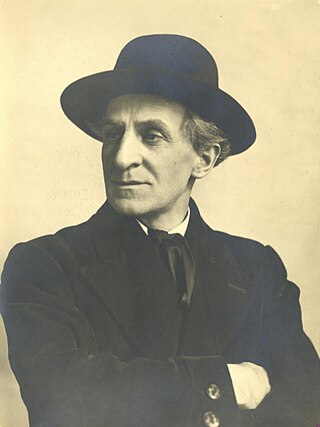Alfred Ost
Belgian artist From Wikipedia, the free encyclopedia
Alfred Ost (14 February 1884, Zwijndrecht – 9 October 1945, Antwerp) was a Belgian designer, watercolorist, illustrator, painter, draftsman and political cartoonist.[1] After his first drawings, of a descriptive realism of animals and genre scenes, he addressed religious themes transposed into a contemporary popular context.[2] He became known as an animal painter and poster designer. His war experiences, intensified by his bipolar disorder, caused a dark colorite and pessimistic themes to be introduced into his art works.[3] During World War I (1914 to 1918) he lived in Amsterdam, where he was influenced by new avant-garde movements. He developed a personal style, first informed by his social engagement, and later by mystical themes.[2]
You can help expand this article with text translated from the corresponding article in Dutch. (December 2021) Click [show] for important translation instructions.
|
Alfred Ost | |
|---|---|
 Portrait of Alfred Ost with hatt, 1930s | |
| Born | 14 February 1884 |
| Died | 9 October 1945 (aged 61) |
| Nationality | Belgian |
| Known for | Painting, drawing, illustration, poster |
| Notable work | Wall drawings of the Xaverius College in Borgerhout, Antwerp. |
| Awards | Bronze Medal 1920 Antwerp Olympics Art Competition |
Life
Summarize
Perspective
He was born in Zwijndrecht near Antwerp, the son of Isidoor Ost (Mechelen, 1847), a coal merchant and Barbara Hamendt (Rupelmonde, 1846) . He was the fourth in a family of five children, which included Urbain, who became an attorney general and his younger brother Hector, who became a priest.[4] His family often moved residence.[5] In 1892 the family was registered in Willebroek. Alfred attended there for three years (from 1892 to 1894) the municipal boys' school. In 1895, he left with his brother Urbain for the boarding school 'Institut Saint Berthuin' in Malonne near Namur. Here he would learn French.

From 1898 to 1901 Ost studied at the Minor Seminary in Hoogstraten. His humanities studies did not suit him as he wished to go to the art academy to become an artist. He was permitted to attend drawing classes at the Antwerp Academy in 1901. The following summer, in 1902, the Ost family left for Mechelen, from which the children had a better train connection to the cities in which they studied.[6]
In 1920 he won a bronze medal at the art competition of the Antwerp Olympic Games for his poster Soccer player.[7]

During the Second World War he found it difficult to adapt to the rationing system for food and other goods. He often lost his war-coupons for food and life necessities. He found shelter, food, and help exchanging his coupons with the Jesuit priests managing the Xaverius College in Borgerhout, Antwerp. In exchange for the help, he offered a piece of work of a religious nature. The Jesuits liked the work and ordered another, this time above the entrance of one of the doors leading to a chapel. As there were many positive reactions and a lot of fascination with the style, power, and dynamism of his art, he was offered to make drawings on all the walls all over the college. The artwork depicts the life of Francis Xavier, the patron saint of Xaverius College and Jesuit of the Jesuit order managing the college. Because of the war, there was no paint available, so his wall drawings was made with charcoal and woodcoal sticks. Much later a protective layer was added and today the paintings are still kept at the college.
References
Bibliography
External links
Wikiwand - on
Seamless Wikipedia browsing. On steroids.
